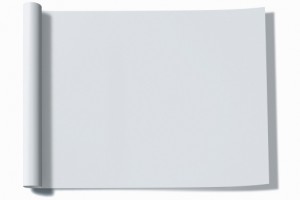The Future of Mobile Visual Search
For QR code developers and lovers, it might be time to consider taking that mourning garb out of storage.
Quick Response codes have appeared in on packaging, in print, and visual media for several years. They can be placed on virtually any surface that allows for users to scan the glyphs with a smartphone, and download the correlated data.
Twas a Dark & Stormy Night..
QR codes have had a tough time. But it was never really their fault. They were poorly understood by new markets initially, and later exploited by agencies that didn't appreciate the importance of providing a quality experience for users--or didn't care. A tangible value was not always present--and soon, neither were followers.
After enough sub-par experiences interacting with QR codes, consumers eventually began to write off their presence.
New Age
The rise of mobile applications marketing gave advertisers a renewed interest in QR code implementation. Mobile app developers could come up with any program imaginable--but there had to be a way to engage users, to reach their devices. This technology provided a way to do just that, and those employing the codes enjoyed a slow but steady increase in adoption.
But before they could gain their footing, new contenders entered the ring--and now QR codes are poised for a TKO from Mobile Visual Search.
Not-So-Epic Battle
Mobile visual search makes the whole world a QR code. And once it is fully realized, it will likely demolish QR technology for a few reasons.
It's the future. Mobile visual search delivers what QR codes promised to and couldn't. The concept almost lives up to the jet-pack hype we were led to believe. This is the technology that will lead to augmented reality becoming reality. Really? Really.
It's personal. Mobile visual search offers a level of intimacy in interaction that can never be rivaled by a black-and-white box on the back of a soda can. MVS has been created collectively, and adopters are invested. Because their images contribute to this world, it is meaningful to them.
It's fresh. QR codes have earned a bad reputation. By failing to pay off, being difficult to use, and feeling exploitative, they have lost the faith of users. MVS offers a new take without needing to overcome any of the same trauma that these faux pas incurred.
It's instant. Consumption and gratification are practically twin sisters. MVS offers a level of instant gratification unparalleled anywhere in the marketing industry. You see it, you want it, you get it. This is exactly what advertising aims to do--neatly expedited.
What's Next?
Building any database takes time. Building one that recognizes any object, location, or visage is (understandably) take some time. For the moment, MVS shines mainly when it comes to landmarks and media.
But the recent launch of Ricoh's Ocutag app indicates the feasibility of this technology for marketing, as seen applied comprehensively to a single market. Sure, for the moment their niche is Bollywood actors and films--but it won't be long until this point-and-click capability applies to everything around us.
As more users participate and drive MVS growth, QR codes' days seem numbered. While it is likely that some applications will continue to benefit from Quick Response codes, technology leaders already know that mobile visual search is the future--and they've put their money where their mouth is.
With commercial giants like Google and Disney leading the way, it's only a matter of time until MVS becomes as familiar and ubiquitous as these very brands themselves.
Helena L is a freelance writer available on WriterAccess, a marketplace where clients and expert writers connect for assignments.



